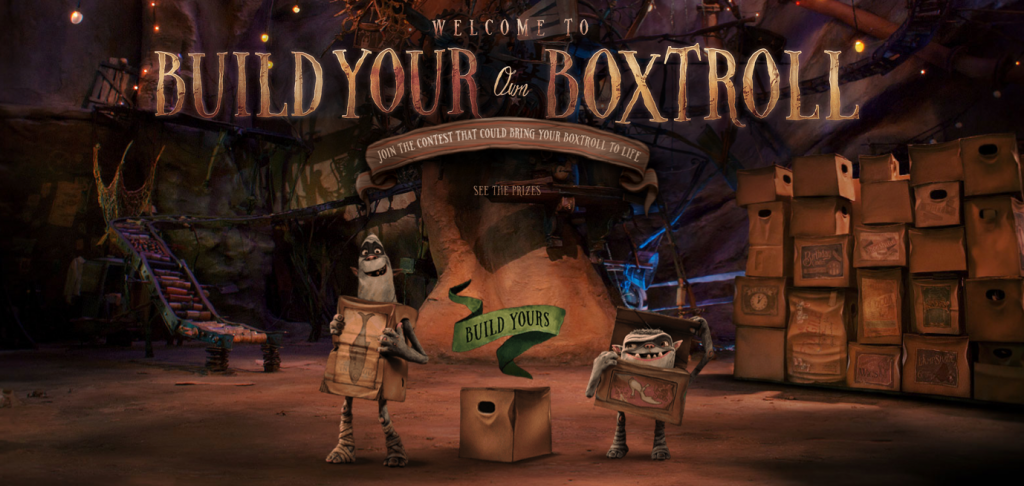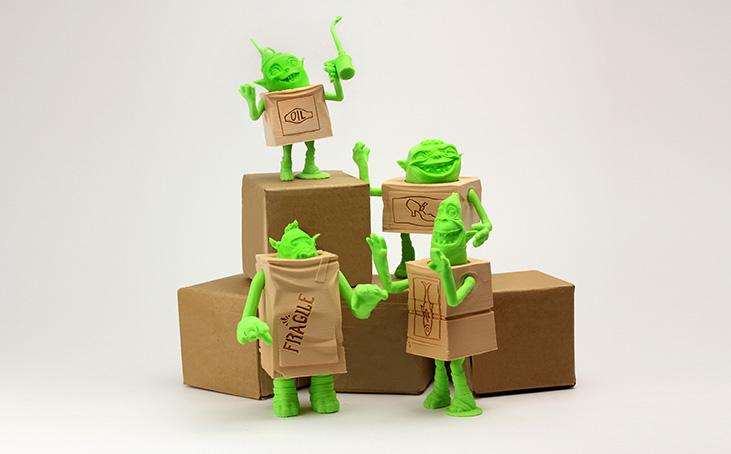On September 26, 2014 my family and I will be relaxing in a nice chilly theater, munching popcorn and chewing Milk Duds while watching The Boxtrolls on the big screen—if we can get a ticket!
Laika, that same studio full of genius talent that brought you Coraline and ParaNorman, brings The BoxTrolls to theaters in a stunning show of artisanship, design, and pure delight. Based on the novel Here Be Monsters! by Alan Snow, The BoxTrolls is a stop-motion animation film featuring a cast of cave dwelling, cardboard box wearing trolls. While the movie and its trolls are garnering volumes of publicity already, the spotlight is shining brightly on the 3D printing techniques used in this film.
3D Printing has the crew of The BoxTrolls wildly enthused—not only in terms of pride in their finished project, but in considering what 3D printing means for the future of special effects in their next movies. With serious innovations in so many industries from art to medicine, 3D printing has shown its ability to change lives, and also, to enrich—as families and friends enjoy the sheer entertainment value technology brings to the moviemaking genre.
As we reported several months ago at 3DPrint.com (“Laika Uses 3D Printing to Create the Stop Motion Characters For Their Latest Film ‘The BoxTrolls,’” – July 14, 2014), in no way does 3D technology take away from the human effort or endanger any jobs, as there are even more artists employed for this movie than there were for Coraline. Rather, 3D printing is being used as a major new tool in their crafting process, unleashing a whole new world of creativity for the designers, as well as aesthetics for the moviegoers. While limited 3D printing (referred to in this context as “replacement animation”) was being explored with Coraline, The BoxTrolls’ producer David Ichioka explains that they progressed by leaps and bounds in being able to produce 3D prints with full color in this movie.
“Now we have multi-colored faces with all kinds of detail on them that all moves about on the face in a way, that, hopefully, when you look at it, makes sense, and doesn’t look like, ‘What’s that random motion going on in the face?’ which is the bugaboo of all animation,” said Ichioka.
Dating back to the late 1800’s, and also known as “stop frame,” this type of animation causes the characters to look like they are moving on their own, but in fact they are being displayed in a series of photographs, creating the illusion of seamless movement. Stop-motion requires intricate artistry as they usually employ dolls that are clay figures with movable joints. In the past, replication for each frame meant any changes to the dolls had to attempt to ensure the same consistency in all subsequent frames—not easy when done by hand.
While there are still hours of painstaking artwork and design required, the artists at Laika had their work and characters enhanced with the use of a full-color ProJet 660Pro 3D printer (formerly the ZPrinter 650) by 3D Systems. Artists at Laika were able to put the printer to work in making face plates for the characters, offering consistent artistry and more variety in faces, but with exact replication each time.
Laika is engaging their audiences further, while simultaneously educating kids about the technology of 3D printing, by offering a suite of 3D printable files for fans to print their own BoxTrolls at home, or through Cubify’s cloud printing service. The files are free to download and available in the soon-to-be favorite characters: Shoe, Oil Can, Fragile and Fish.
Did you enjoy or notice any of the 3D techniques used in Coraline? Will you be going to see The BoxTrolls? What do you think about 3D printing in the movie industry? Share, and let us be your audience in the BoxTrolls 3D printing forum thread at 3DPB.com.
Subscribe to Our Email Newsletter
Stay up-to-date on all the latest news from the 3D printing industry and receive information and offers from third party vendors.
You May Also Like
Precision at the Microscale: UK Researchers Advance Medical Devices with BMF’s 3D Printing Tech
University of Nottingham researchers are using Boston Micro Fabrication‘s (BMF) 3D printing technology to develop medical devices that improve compatibility with human tissue. Funded by a UK grant, this project...
3D Printing Webinar and Event Roundup: April 21, 2024
It’s another busy week of webinars and events, starting with Hannover Messe in Germany and continuing with Metalcasting Congress, Chinaplas, TechBlick’s Innovation Festival, and more. Stratasys continues its advanced training...
3D Printing Webinar and Event Roundup: March 17, 2024
It’s another busy week of webinars and events, including SALMED 2024 and AM Forum in Berlin. Stratasys continues its in-person training and is offering two webinars, ASTM is holding a...
3D Printed Micro Antenna is 15% Smaller and 6X Lighter
Horizon Microtechnologies has achieved success in creating a high-frequency D-Band horn antenna through micro 3D printing. However, this achievement did not rely solely on 3D printing; it involved a combination...
































